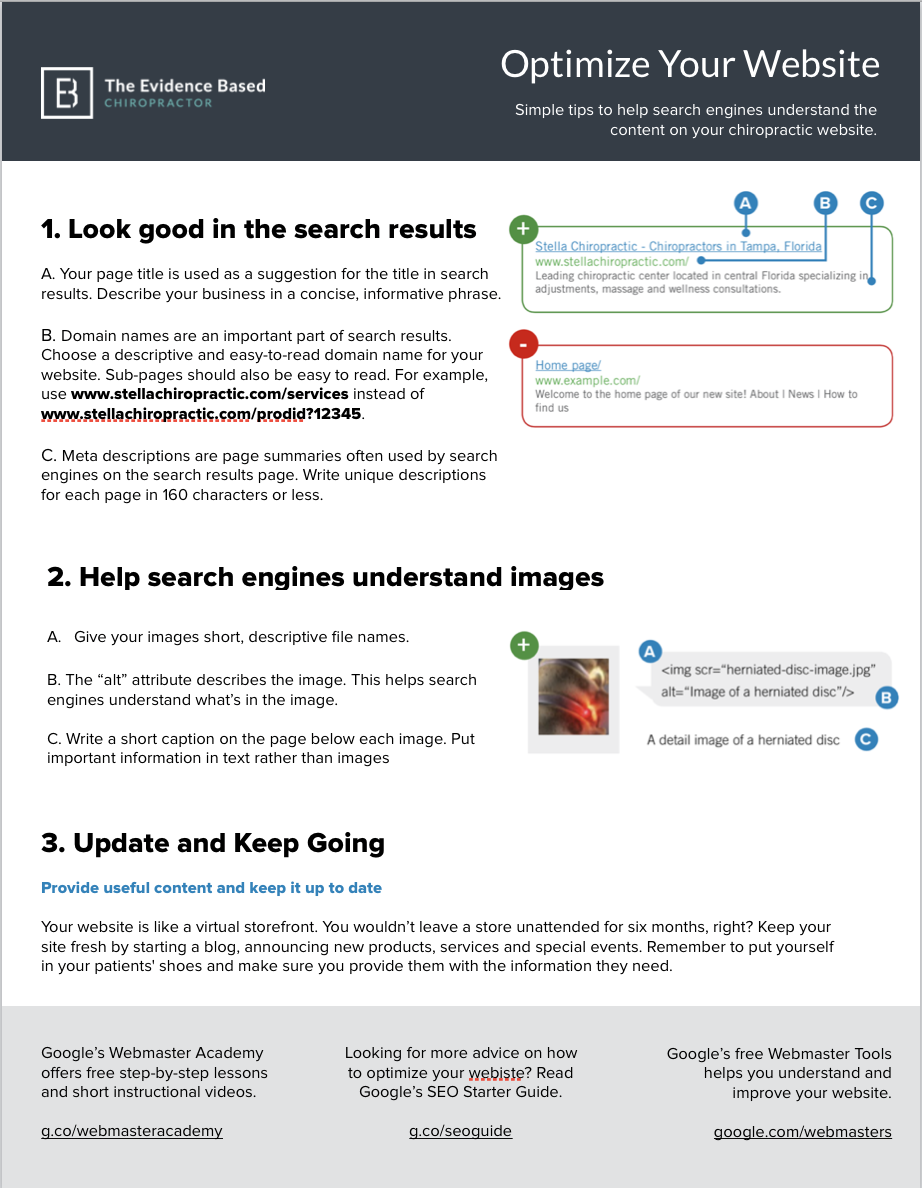Optimizing Your Chiropractic Website for Free Organic Traffic
There are only two ways to get traffic to your website: organic (free) or ads (paid).
Why is traffic to your website so important? New surveys show that over 75% of your patients will visit your website before scheduling an appointment in your practice.
With a majority of your future patients visiting your site before scheduling their appointment, your website must be a significant part of your overall chiropractic marketing strategy.
The quality (and content) present on your website can attract or repel patients. It can make or break your practice.
Ideally, your website should be optimized for chiropractic specific SEO and generating at least 80% of its traffic organically. You may want to supplement or add to your free traffic by occasionally purchasing ads. But be careful, just like a drug, you don't want to become addicted to paid traffic. The price will continue to rise, and the results will continue to diminish over time.
Optimizing Your Chiropractic Website
Here are a few simple tips to help search engines understand the content on your site.
1. Look good in the search results using the tips below.
A. Your page title is used as a suggestion for the title in search results. Describe your business in a concise, informative phrase. Your title tag should be descriptive of your practice as well as enticing.
B. Domain names are an essential part of search results. Choose a descriptive and easy-to-read domain name for your website. Sub-pages should also be easy to read. For example, use www.stellachiropractic.com/services instead of www.stellachiropractic.com/prodid?12345
C. Meta descriptions are page summaries often used by search engines on the search results page. Write unique descriptions for each page in 160 characters or less. Be sure to include your targeted keywords in the meta-description. The goal of your meta-description is to entice the person searching to click on your website.
2. Help search engines understand Your images
Images on your website can either dramatically help or hurt your ability to be found on Google. Large images can slow down your website and cause your rank to suffer. Once you compress your images using a tool like Squash, you'll want to use the following three tips to help the search engines understand the pictures on your website.
A. Give your pictures short, descriptive file names.
B. The “alt” attribute describes the image. This helps search engines understand what’s in the picture.
C. Write a short caption on the page below each image. Put important information in the text rather than images.
3. Update, keep going, and stay consistent
Provide useful content and keep it up to date
Your website is like a virtual storefront. You wouldn’t leave a store unattended for six months. Keep your site fresh by starting a blog, announcing new products, services, and special events. Remember to put yourself in your patients' shoes and make sure you provide them with the information they need.
If you need help updating the content on your website check out The Smart Chiropractor. We provide docs with all of the content they need on their website, social channels, and more to get more new patients, attract more followers, and drive more visits to their website.
More information and support directly from Google
Google’s Webmaster Academy offers free step-by-step lessons and short instructional videos.
Looking for more advice on how to optimize your website? Read Google’s SEO starter guide:
Google’s free Webmaster Tools helps you understand and improve your website, get timely alerts on problems, and find answers to questions.






